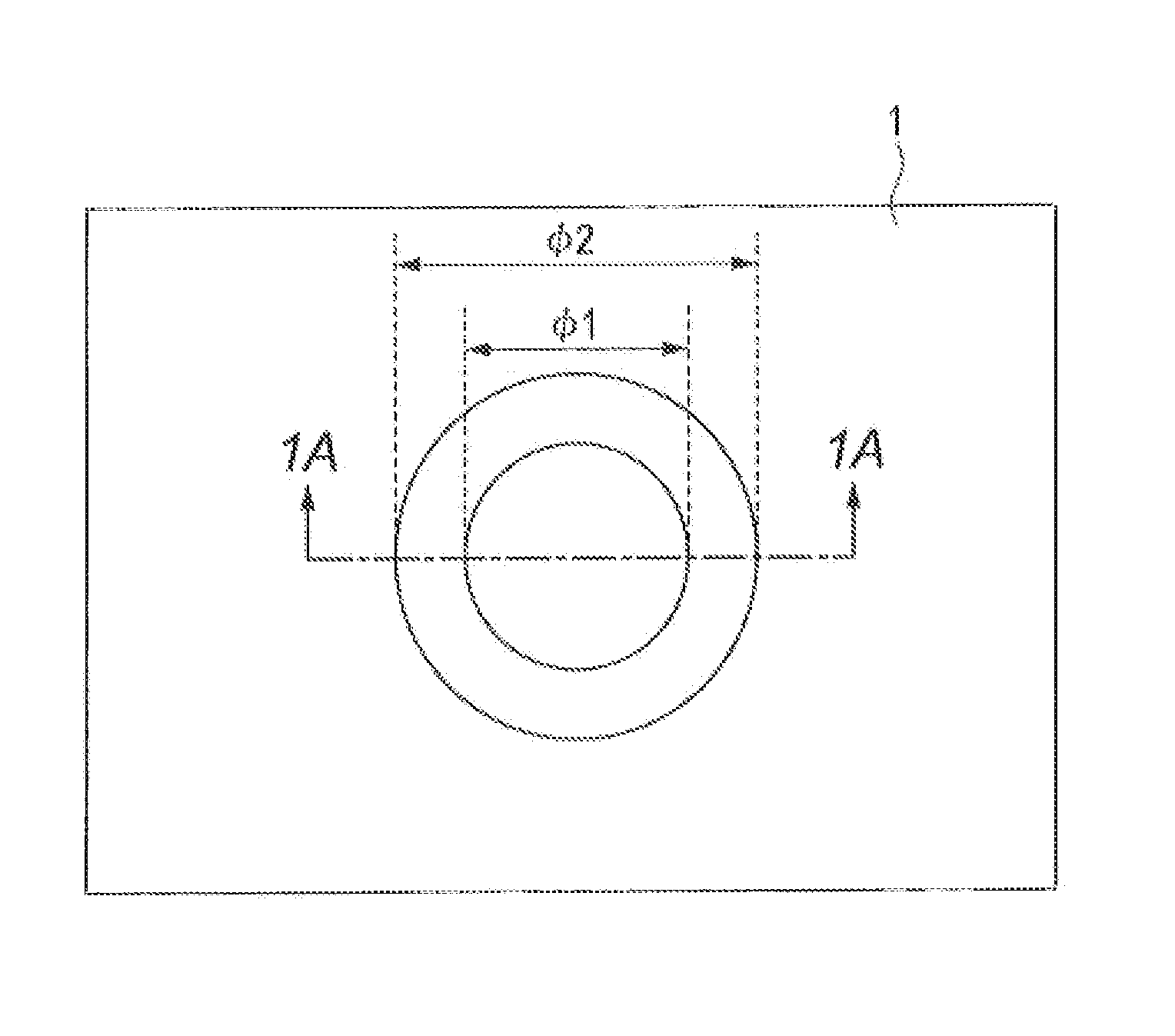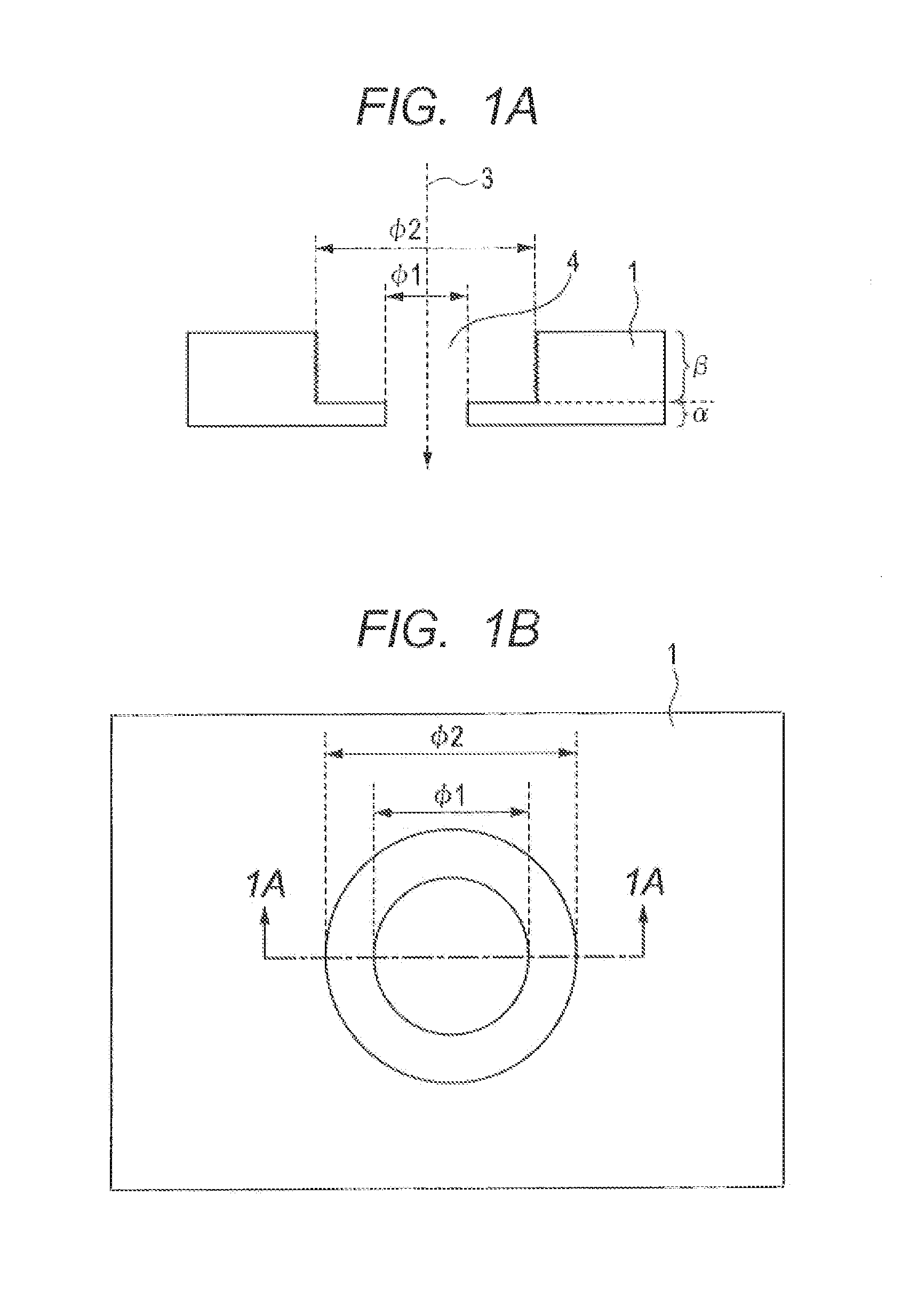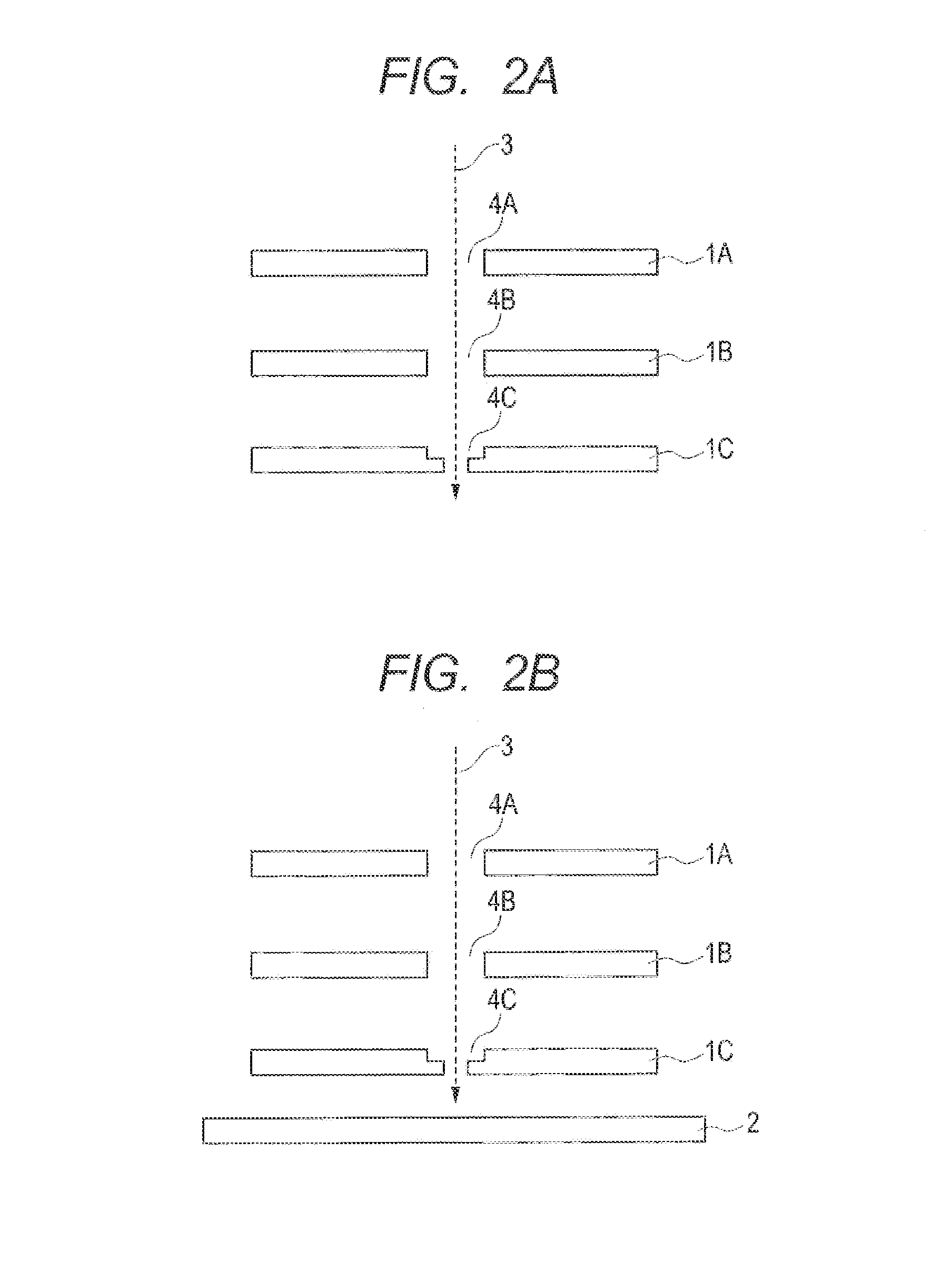Electrode for a charged particle beam lens
a technology of electrostatic lens and electrode, which is applied in the direction of beam deviation/focusing by electric/magnetic means, instruments, mass spectrometers, etc., can solve the problems of deterioration of the optical characteristics of the lens, and achieve the effect of reducing the space between the lens including the electrode and the obj
- Summary
- Abstract
- Description
- Claims
- Application Information
AI Technical Summary
Benefits of technology
Problems solved by technology
Method used
Image
Examples
first embodiment
[0016]With reference to FIGS. 1A and 1B and FIGS. 5A to 5C, a first embodiment of she present invention is described, FIG. 1B is a schematic top view of an electrode closest to an object to be irradiated by a charged particle beam, which is used for a charged particle beam objective lens, FIG. 1A is a schematic cross-sectional view taken along the line 1A-1A of FIG. 1B.
[0017]As illustrated in FIG. 1A, in this embodiment, an electrode 1 closest to the object to be irradiated by the charged particle beam is a flat plate having an optical axis 3 as the normal, and has a through hole 4, This through hole 4 has a circular cross section, which includes a first region α having a first internal diameter φ1 and a second region β having a second internal diameter φ2. The relationship between those internal diameters is φ2>φ1. The second region β having the relatively larger internal diameter is positioned on the side closer to a charged particle source as a light source (not shown), namely, a...
second embodiment
[0027]With reference to FIG. 2A, a second embodiment of the present invention is described. This embodiment is a charged particle beam objective lens using an electrode described in the first embodiment. A portion having the same function as that of the first embodiment is denoted by the same reference numeral or symbol, and an overlapping description thereof is omitted.
[0028]As illustrated in FIG. 2A, the charged particle beam objective lens of this embodiment includes three electrodes 1A, 1B, and 1C. The three electrodes are flat plates having the optical axis 3 as the normal and are electrically insulated from each other. The three electrodes have through holes 4A, 4B, and 4C, respectively, which transmit the charged panicles emitted from the charged particle source (not shown). The centers of the through holes 4A, 4B, and 4C are aligned along the optical axis direction. If each electrode has multiple through holes, corresponding through holes of the multiple electrodes are align...
third embodiment
[0035]With reference to FIGS. 2B, 3A, and 3B, a third embodiment of the present invention is described. This embodiment shows an exemplary positional relationship between a shape of the electrode closest to the sample to be irradiated with the charged particle beam and the sample in a case wherein the charged particle beam objective lens is applied to the charged particle beam exposure equipment. A portion having the same function as the above-mentioned embodiments is denoted by the same reference numeral or symbol, and an overlapping description thereof is omitted.
[0036]FIG. 2B is a schematic cross-sectional view of the charged particle beam objective lens and its vicinity of the charged particle beam exposure equipment according to this embodiment. As illustrated in FIG. 2B, in the charged particle beam exposure equipment of this embodiment, a sample 2 is irradiated with, the charged particle beam passing through the through holes 4A, 4B, and 4C of the electrodes 1A, 1B, and 1C to...
PUM
 Login to View More
Login to View More Abstract
Description
Claims
Application Information
 Login to View More
Login to View More - R&D
- Intellectual Property
- Life Sciences
- Materials
- Tech Scout
- Unparalleled Data Quality
- Higher Quality Content
- 60% Fewer Hallucinations
Browse by: Latest US Patents, China's latest patents, Technical Efficacy Thesaurus, Application Domain, Technology Topic, Popular Technical Reports.
© 2025 PatSnap. All rights reserved.Legal|Privacy policy|Modern Slavery Act Transparency Statement|Sitemap|About US| Contact US: help@patsnap.com



